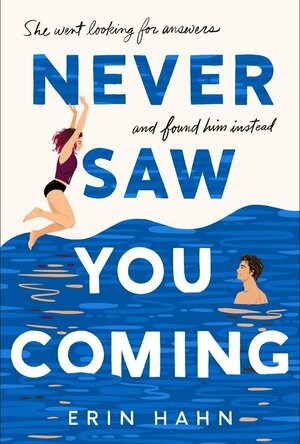
Calm Radio - Online streaming with relaxing music
Music and Entertainment
App
CalmRadio comes loaded with: 1 -Over 240 subscription channels** (no commercials) 2 -Over 190 free...

Glen More II: Chronicles
Tabletop Game
Glen More II: Chronicles is a sequel to Glen More, expanding the gameplay substantially compared to...

Merida Mexico Offline City Map Navigation
Travel and Business
App
"TRAVEL AROUND THE WORLD WITH OUR NEW TEXTURED TRAVEL APP TO THE MOST WONDERFUL DESTINATION AROUND...

Inspiration Maps™
Education and Productivity
App
Welcome to Inspiration Maps™, the most intuitive and powerful visual learning app on the iPad....

Naval Creed:Warships
Games
App
●Description● Naval Creed is a naval-battle-themed TPS game with 360° free perspective 3D...

Real Racing 2
Games and Entertainment
App
Read on for important info below! **Fully enhanced for iPhone 5.** Get ready for the most...

Phoenix Wright: Ace Attorney – Dual Destinies
Games
App
************************************************ ※NOTICE※ This game does not support devices...
Purple Phoenix Games (2266 KP) rated Steam Park: Play Dirty in Tabletop Games
Aug 20, 2021
This breakdown is for the action dice-rolling and them park-building game Steam Park’s modular expansion, Play Dirty (as in dirt, not as in adult themes). Play Dirty is a modular expansion, so some modules may be added or left out depending on comfort level and enjoyment of each module.
One major module added to this expansion is the addition of a fifth player to Steam Park. As if Steam Park wasn’t frantic enough with four, go ahead and throw in a fifth set of hands going crazy at the table! Also included are gray “Stingy Visitors,” which act as wild visitor types for color, but provide one less Danari (currency in Steam Park) but create NO DIRT. Excellent! Play Dirty also includes a new set of five stands for robots to do business: Fountain, Hall of Mirrors, Office, Shooting Gallery, and Incinerator. Along with these new stands are a set of stand reference tiles to remind players what each stand actually does in the game. Very handy.
The biggest difference-makers in the expansion box are the Ride Extensions, Park Directors, and Espionage Dice. Ride Extensions do just that – extend existing rides in one’s park, but the two different colored extensions (golden and rusty) have their own rules that are triggered depending on colors of robots upon them. The Park Directors module adds a new twist that changes the rules for an aspect of the base game for all players throughout the entire game. These are very powerful changes, and one Park Director is chosen to be used at the beginning of each game. Espionage Dice are very special in that one is added to each player’s white dice and rolled as normal throughout the game. However, the Espionage Dice cost 4 Danari to activate after the Roll Phase. The power here is that the player using the die pays one Danari less to use it when matching the face of white dice in their opponent’s pig sitting to their right. For example, to use a Build Stand face on Espionage Die will cost four Danari normally. However, should the opponent on the right have four Build Stand symbols showing on their white dice, the Espionage Die activates for free!
Must you own the Play Dirty expansion to truly enjoy your plays of Steam Park? Not at all. I do very much enjoy several of the modules in the box though. I really enjoy the powerful Park Directors because it freshens up a rule from the base game or modifies it in interesting ways. I like the new Stands that come in the box as well for additional options during play, but you MUST use the reference tiles, especially if combining all 10 Stands. The other modules are fine, but I would have been happy with just the ones I mentioned here.
Official recommendation: I remember my first play of Steam Park and falling in love with it right away. I have never felt stagnation in my future plays, but adding Play Dirty certainly is a game-changer in every sense of the term. I say definitely pick it up if you are feeling the base game no longer gives you the excitement and frenzy it once did.
Kristy H (1252 KP) rated Never Saw You Coming in Books
Sep 30, 2021
"Because the uncomfortable truth is, while the church loves sinners in their pews, they don't want them in front of a crowd. It's the difference between acceptance and tolerance, and it might catch on. God forbid."
This is a really lovely and moving story. While it includes a lot of religious themes and discussion, it never felt like too much--religion and forgiveness informs the story, rather than detracts from it. Meg is a side character in Hahn's excellent book, MORE THAN MAYBE, and we see glimpses of Vada and Luke from that tale (which is really fun). It's wonderful to see Meg fully explored here--Hahn writes her sections in a snappy and smart way, capturing Meg perfectly. She's so sweet, yet smart and tough. Her entire life has been upended, and Meg truly must rethink her whole faith and foundation. I think a weaker person would crumple at such a situation. Watching her grow is really fun; you cannot help but root for her.
And Micah is a great character, too. He too, has had his faith tested, as his father destroyed his church and Micah's belief in the church. Micah and Meg's romance is cute, honest, and real. Hahn's book explores how shamed these two feel by falling in love and how the church has conditioned them to feel that love, happiness, and romance can be wrong and even sinful. It tackles the pain of loving a Jesus/God who then censures you for loving. It's so adept at this and skilled at portraying their struggles. How can the love of these two sweet, earnest kids be wrong? And as they explore why bad things happen--especially as they believe so fully--the book makes you think and examine deeply. It deftly exposes the church's focus on female purity only, while often ignoring the males. Honestly, whether you're religious or not, this is a must-read, especially in these times, when so much of the control of a women's body seems not be our own.
Overall, I loved this book. It offers a charming romance, along with a timely look at religion and how it can affect young people as they make their way in the world. The side characters are excellent (I'm looking at you, Duke, and Cash the dog!). Hahn's writing is as excellent as ever. 4.5 stars. Please note the author's own note for a trigger warning for self-harm and suicide.
I received a copy of this book from St. Martin's Press / Wednesday Books and Netgalley in return for an unbiased review.


